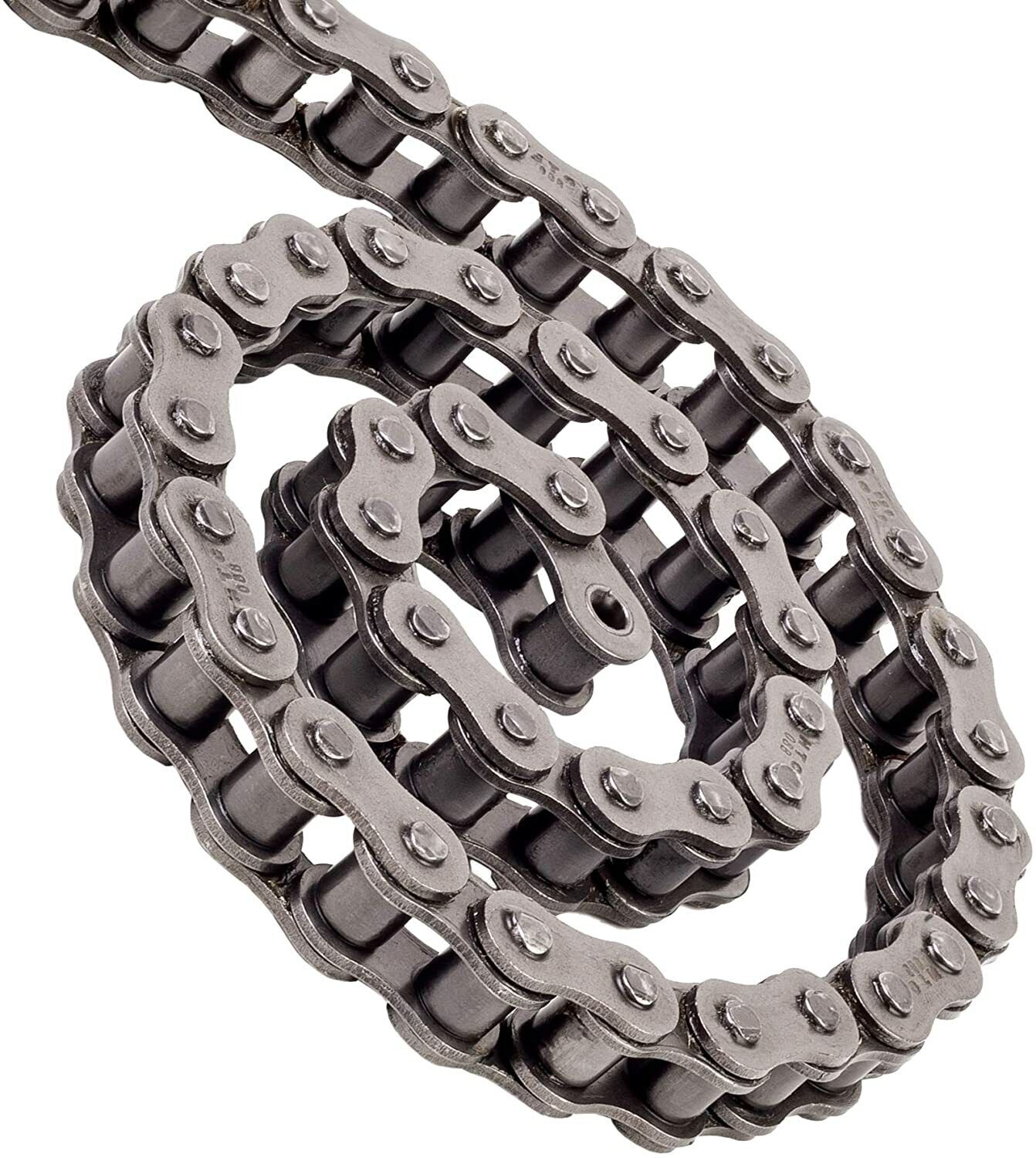Roller chains are an important component of many types of machinery, from agricultural equipment to industrial equipment and heavy machinery. They are designed to efficiently transfer power from one shaft to another while maintaining a precise ratio. However, over time, roller chains can wear and stretch, leading to reduced efficiency, increased maintenance costs, and even system failure. In this article, we will explore common causes of roller chain wear and elongation and possible solutions.
What is roller chain wear?
Roller chain wear is a natural phenomenon that occurs when two metal surfaces rub against each other during operation, causing material to peel off the contact surfaces. The wear process is affected by a variety of factors, including load, speed, lubrication, alignment and environmental conditions. The most common wear points on chains are the bushings and pins, which are the primary “bearing” points where the chain articulates.
Roller chain wear
What is roller chain elongation?
As shown in the picture above, roller chain elongation is caused by worn pins and bushings causing the chain to gradually become longer. As the chain material wears, the space between the pin and bushing becomes larger, causing the chain to become longer due to the extra space between the parts. This causes the chain to run higher on the sprocket teeth, making the chain less efficient and increasing the likelihood of tooth skipping or jumping off the sprocket. This is often referred to as chain stretching, even though the chain doesn’t technically stretch. All chains should usually be replaced once they have stretched 3% beyond their original length.
Common causes of roller chain wear and elongation
Several factors can cause roller chain wear and elongation. Some of the most common include:
Insufficient lubrication: Roller chains require proper lubrication to reduce friction and wear between chain components. Insufficient or improper lubrication can cause the chain to wear quickly and lead to premature elongation.
Chain Construction Quality: An important factor is the quality of the components used in the chain. Bushings are one of the most important parts of the chain and come in two styles: solid bushings and split bushings. Solid bushings have better wear resistance than overflow bushings. All Nitro chains are manufactured with solid bushings.
Preloading: Also known as pre-stretching, preloading is the process of applying a load to a newly manufactured chain that holds all components within the chain in place, thereby eliminating initial stretch. All Nitro chains are pre-stretched to at least the minimum values required by ANSI and British Standards.
Overloading: Excessive loads beyond the chain’s design capabilities can cause the chain to stretch and elongate over time due to excessive stress. This is particularly common in industrial applications, where heavy loads and high speed operation can lead to rapid wear and elongation. Loads generally should not exceed the maximum working load listed for any given chain size.
Contamination: Dirt, dust and other abrasive debris can accumulate in the chain, causing increased friction and wear. In some cases, contaminants can even cause corrosion of metal components, further accelerating wear and elongation.
Corrosion: Roller chains operating in corrosive environments may experience accelerated wear due to the corrosive effects of chemicals or moisture on metal surfaces.
Misalignment: When the sprockets are not properly aligned, the chain will experience greater stress, causing accelerated wear and elongation. Misalignment can be caused by improper installation, worn sprockets, or excessive axial or radial loads.
High operating temperatures: If the chain’s operating temperature exceeds the recommended range, metal components will expand and contract, causing accelerated wear and elongation.
What are the possible solutions?
Fortunately, there are several solutions to address roller chain wear and elongation issues. Some of the most effective solutions include:
Proper lubrication: Using a high-quality lubricant and ensuring regular use will help reduce friction and extend the life of your chain.
Cleaning: Cleaning your chain regularly will help remove contaminants that cause wear and stretch.
Proper Alignment: Making sure your sprockets are properly aligned can reduce stress on your chain and extend its life.
Load Management: Avoiding overloading the chain and operating within the recommended load range can prevent accelerated wear and elongation.
Temperature management: monitor the chain’s operating temperature and ensure it remains in optimal condition

Post time: Oct-27-2023



